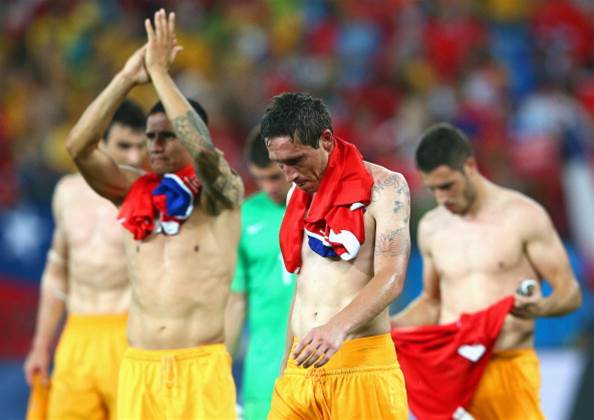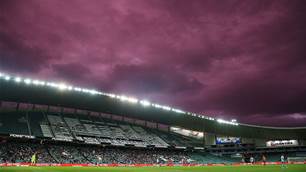As Socceroos fans don the polar-fleece and look towards another World Cup dawn, we cast our mind back to 2014. Less has changed than you might have thought…
Mathew Leckie –
Now plying his trade for Hertha Berlin, after Aaron Mooy, Leckie is the only Australian outfielder playing regularly in one of Europe’s top five divisions.
The winger’s stellar performances at the 2014 World Cup were the reason behind his move to the Bundesliga, which has translated to generally exciting performances for the national team.
Mark Milligan –
Although Milligan only made one brief appearance at the 2014 World Cup, his reputation as an excellent utility option and back-up central defender was forged during this World Cup cycle.
Given his passing range, capable tackling and regular appearances under van Marwijk so far, it seems plausible Milligan will play a larger World Cup role this time around.

FINAL VERDICT
While Ryan, Luongo and Leckie have excelled since their inclusion in the 2014 World Cup, every other leftover from Brazil is now in their early to mid 30’s – not a strong record for a supposedly reformative campaign.
Of the three true winners, only Ryan is a crucial performer for a large club. Luongo is in a lower-table side in England’s second tier, while Leckie is often a substitute in Berlin.
However it’s inaccurate to judge Postecoglou for this rate of development – it’s largely down to the individual players. So let’s have a look at the younger stars who had the potential in 2014, but couldn’t make the progress.
LOSERS
Oliver Bozanic –
The 2014 World Cup arrived smack-bang in the middle of the best period of Bozanic’s career. He was 25-years-old, playing regularly for Swiss club Luzern and subsequently made two appeances at the Brazillian showpiece.
A run of two short-term injuries aside, his decision to leave Luzern prevented Bozanic from forging a prolonged Socceroos career. Now 29, he’s only accumulated three Socceroos caps since 2014 and has only ventured overseas for a brief, unsuccessful spell in Japan.
Related Articles
.jpeg&h=172&w=306&c=1&s=1)
Spurs assistant Mile Jedinak reveals coaching future

Postecoglou filled with optimism as Spurs thump Everton













